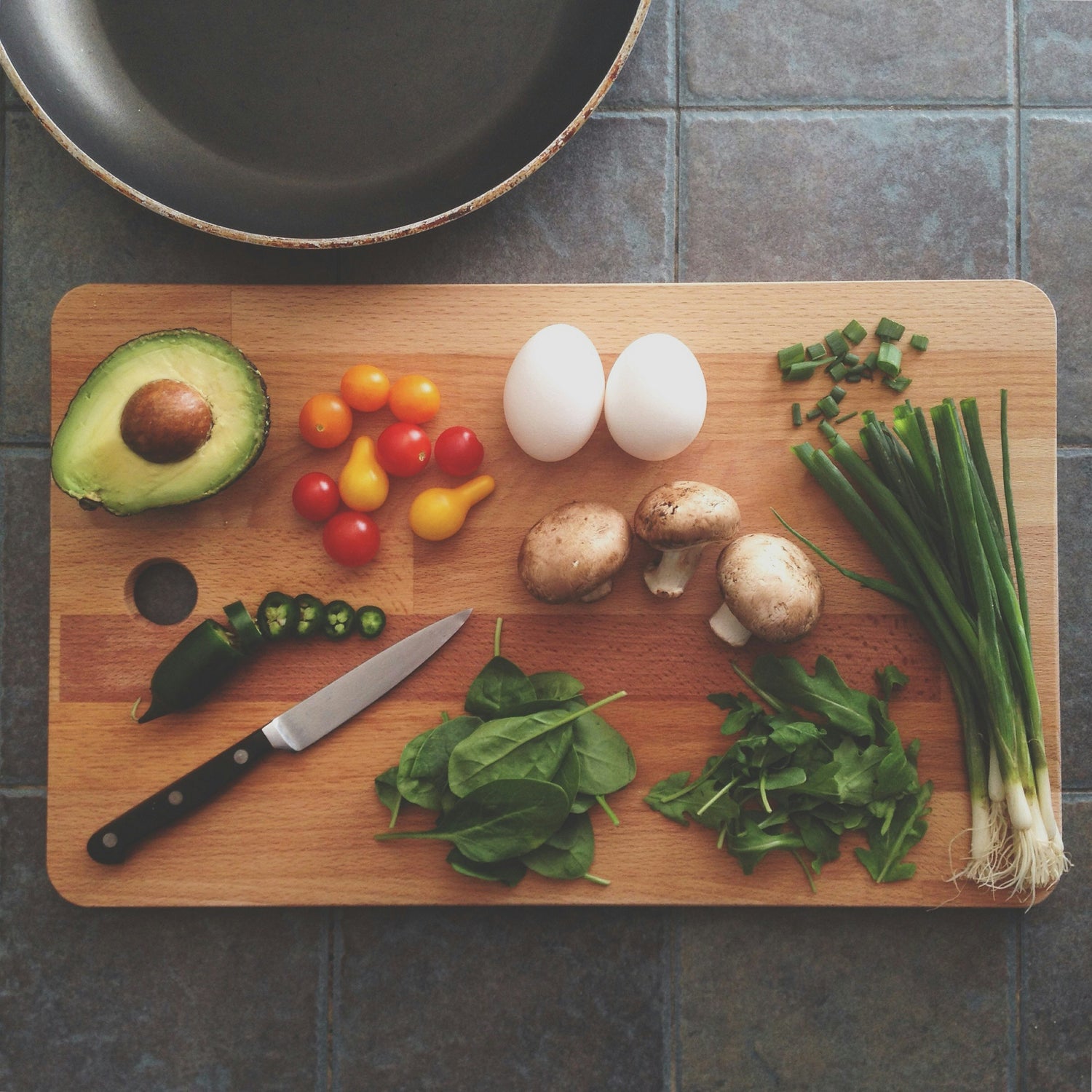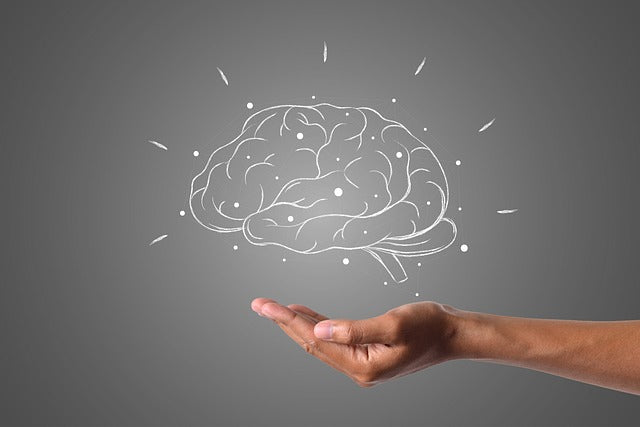Natural Sleep
Support Natural Sleep with Lifestyle Changes and Potent Botanicals
Sleep isn’t easy these days. Even when darkness falls, our minds remain lit up--just like our phones and computer screens. We’ve powered through work with too much caffeine and still wide awake at bedtime. We’re surfing social media, commenting on pictures posted halfway across the world, or answering emails long after work hours are over. We’re beset with random worries as soon as our head hits the pillow—about work, relationships, family, friendships, colleagues, bills, or the state of the world. We’re staying up late on weekends, and getting up early on weekdays to fit in a workout. Or, we’re awake because we know we have to sleep before a big event the following day—and just knowing that keeps us up. We’re tossing, turning, and finding it hard to calm down and ease into deeply restorative sleep.
In other words, our autonomic nervous system is revved up too high. There are two branches that make up the autonomic nervous system: the sympathetic and the parasympathetic. The two work together, like yin and yang, or night and day. When awake, the sympathetic “fight or flight” nervous system is dominant, keeping all our systems in a state of readiness and action. But as we drift into sleep, the parasympathetic “rest and repair” arm of our nervous system begins to take over.[1] The parasympathetic nervous system helps lower heart rate and blood pressure, slow breathing, and even make the use of oxygen more efficiently. If the sympathetic nervous system is still dominant and on high alert, we will be in a state of hyper-arousal and sleep cycles can be impaired. In fact, individuals who suffer from chronic insomnia demonstrate elevated sympathetic nervous system activity.[2]
Both arms of the nervous system are critical. The key to remember is that when you’re in a parasympathetic state, you are able to rest, digest, repair, regenerate, detoxify, and heal your body. That’s why it’s so important to have tools to support high-quality sleep. We are meant to spend a third of our lives asleep. Sleep truly is a foundation for optimal health, and the quantity and quality of sleep enhances mind and body, immune system, mood, and quality of life.[3]
Tried and True Ways to Fall Asleep Naturally
Sleep experts have long recommended simple but effective changes to sleep ‘behavior’ that can restore a natural sleep cycle. These include:
Sleep Hygiene. Good sleep habits are referred to as sleep “hygiene”, and according to the Centers for Disease Control (CDC) there are several key changes that should be made. First, be consistent. Go to sleep around the same time each night and get up around the same time each morning, even on weekends. Try not to nap when tired. Keep the bedroom quiet, dark and peaceful. Avoid bright screens from televisions, computers and smart phones at least two hours before falling asleep.
Avoiding caffeine and alcohol. Try not to drink any caffeinated beverages less than four hours before bedtime. Similarly, too much wine, beer or spirits before bedtime may initially help you fall asleep, but will often lead to disrupted sleep and awakenings later in the night.[4]
Mindfulness meditation. Mindfulness is always available to us. It is the ability to be fully present, mindful of our surroundings, watchful without being overly reactive. Practicing mindfulness meditation allows one to actually remodel the brain so that we are less reactive, less primed to fight-or-flight. Mindfulness-based therapy for insomnia (MBTI) has been shown to help people fall asleep more quickly and increase the amount of time spent sleeping. The effects are long lasting.[5] Mindfulness-based stress reduction techniques reduce chronic insomnia. Focus groups held with insomnia sufferers practicing mindfulness have been encouraging. Participants say they sleep better and longer, wake more refreshed, and feel less anxious about not sleeping.[6] To learn more about mindfulness techniques, view these 22 different exercises here.
Four Botanicals That Support Natural Sleep
Botanicals, phytonutrients and herbs have long been used to support a healthy sleep cycle and relieve occasional insomnia. They offer a natural approach to calming the brain and nervous system, and are non habit-forming. These natural molecules have different mechanisms of action, and when combined offer an enhanced, synergistic effect.
GABA (gamma-amino butyric acid)
GABA is an amino acid produced naturally in the brain, our unique ‘calm and connect, rest and repair’ neurotransmitter.[7] GABA works by binding to neurons and inhibiting or slowing down nerve impulses.[8] By inhibiting neural activity, GABA helps quiet the firing of neurons in the brain and central nervous system, which leads to relaxation and a feeling of calm, as well as a more balanced mood, less pain and better sleep.
Some medications for anxiety, such as benzodiazepines, bind to GABA receptors and induce relaxation. Alcohol also binds to GABA receptors. Neurons high in GABA receptors populate the entire brain, and they specialize in different phases of sleep, including REM and non-REM sleep.[9]
Supplementation with GABA can increase calming alpha-wave brainwaves during challenging mental tasks.[10],[11] Supplemental GABA may also reach receptors in the so-called gut-brain, calming digestion.[12] GABA may also enhance immunity, especially in stressful situations.[13] Above all, GABA can support a good night’s sleep. Certain GABA receptors are highly expressed the part of the brain responsible for sleep and wakefulness.
Not all GABA is alike, however. Naturally sourced GABA, produced via fermentation by Lactobacillus hilgardii, has been found superior to synthetic GABA in numerous studies. Synthetic GABA may be produced from an industrial solvent called pyrrolidinone. The natural form is found in kimchi, a traditional Korean salted fermented dish.[14] Naturally sourced GABA promotes relaxation and alpha wave activity and reduces the time to fall asleep as well as increases the amount of time spent in deep, restorative sleep. Upon awakening, individuals report better and more satisfying sleep.7 Naturally sourced GABA works rapidly, increasing blood levels of GABA within 30 minutes of oral consumption. It enhances valuable non-REM sleep time.[15] In one unpublished, double-blind study, naturally sourced GABA, but not synthetic GABA, was shown to produce relaxation. Brain wave patterns slowed, and indicators of stress such heart rate, the stress hormone cortisol, and markers of adrenal stress, all suggested relaxation and calm.[16] In other research, natural GABA lowered biological markers of stress in individuals who were afraid of heights and were walking across a suspension bridge that spanned a canyon.[17]
There has been controversy about whether supplemental GABA can actually cross the membrane, called the blood-brain barrier, that protects the brain.[18],[19] But new research suggests GABA can easily impact brain function through the enteric nervous system (ENS)—called the “gut brain.” This is a network of neurons that control our gastrointestinal system. The entire ENS is rich with GABA receptors. There are three types of GABA receptors—A, B and C—and all three enhance different stages of sleep.[20] Since the gut connects directly to the brain through the long, large vagal nerve it is thought that supplemental GABA could calm the brain through the gut.[21]
Liquid Skullcap extract (Scutellaria lateriflora)
American skullcap boasts a whorl of pretty blue or purple flowers that look like a cap. This well-known botanical has a reputation as a powerful and calming “nervine” that helps soothe the mind and provide a sense of peace, allowing sleep to naturally arrive. Western herbal medicine uses skullcap for anxiety, panic attacks, tension, depression, stress and sleep disorders.[22] In one placebo-controlled study of nineteen healthy volunteers, skullcap reduced subjective anxiety without impairing cognitive function.[23] Skullcap is approved for use as a mild sedative by Health Canada.[24]
Skullcap’s action may be through its ability to bind to specialized GABA-A receptors, similar to benzodiazepine or barbiturate medications. However, prescription medications either stimulate the receptor to fire more frequently, or they keep it open for longer. Over time, this can change the actual shape and architecture of the receptor, and can lead to dependence.[25] Plants function far more gently; they may contain natural molecules that bind to GABA receptors, helping activate it, but without forcing it to stay open or fire more often. Skullcap’s unique flavonoids—including baicalin, baicalein, and wogonin, all bind to GABA receptors.[26] Skullcap’s flavonoids also bind to serotonin receptors, perhaps helping boost mood.[27] When 62 professional herbalists responded to a questionnaire, 57 said they regularly prescribed skullcap, mainly for the relief of anxiety. More than half of the practitioners used the herb for insomnia and sleep disorders—noting that the poor sleep was usually linked to worry, anxiety and obsessive or racing thoughts.[28]
Passion Flower extract (Passiflora incarnata) is a lovely tendril-bearing vine with purple and white blossoms that has long been used to ease anxiety and promote restful sleep. This botanical has been used by herbalists for the treatment of insomnia and anxiety since the middle of the 19th century.[29] A review of eight clinical studies conducted between 1998 and 2012 found that passion flower was helpful for generalized anxiety disorder, presurgery anxiety, insomnia, attention-deficit hyperactivity disorder, opiate withdrawal symptoms and the control of menopausal symptoms.[30] A German study conducted from 2015 to 2017 asked medical doctors specializing in phytotherapy to interview their patients about their experiences with passion flower. Most patients reported feeling more calm and centered: ‘The newly attained calmness also led me to develop mindfulness and the ability "to let go"’ reported one patient.[31]
Passion flower is high in GABA[32] and has long been used by herbalists to lighten mood, ease worry and support a good night’s sleep.[33]. It also contains potent flavonoids, such as apigenin, with an affinity for GABA receptors.[34]
Egyptian Blue Chamomile Flower oil. Chamomile is one of our most revered and ancient medicinal herbs, with a long history of folk use for calmness, relaxation and sleep.[35] It is also one of the most well documented medicinal plants in the world. The plant is composed of a variety of oils that, when exposed to steam distillation, range in color from brilliant blue to deep green. The fragrant, midnight-blue essential oil of Egyptian blue chamomile is particularly prized.[36] The volatile oil contains numerous potent lactones, glycosides, flavonoids and terpenoids that contribute to its flavor, fragrance and effectiveness.[37]Apigenin, a component of chamomile has a known affinity for GABA-B receptors, and in numerous animal studies helped ease anxiety and promote mild sedation. Animal studies show that chamomile extracts exhibit benzodiazepine-like hypnotic activity, and researchers speculate that as yet unidentified compounds beyond apigenin may influence GABA receptors.[38]
Focus on Autonomic Balance
A state of optimal health allows us to shift you from fight or flight mode to rest, digest and repair mode with ease. This is called autonomic nervous system balance. While the world around us encourages us to stay revved up, constantly ready for action, our body needs times of peace, relaxation and repair. This is what we find in a good night’s sleep, and we can achieve this with simple lifestyle changes and a science-based blend of traditional and cutting-edge phytonutrients.
References
[1]Harris CD. Neurophysiology of sleep and wakefulness. Respir Care Clin N Am. 2005 Dec;11(4):567-86.
[2]Farina B, Dittoni S. Heart Rate and Heart Rate Variability Modification in Chronic Insomnia Patients. Behavioral Sleep Medicine. 2014 (12): 4
[3] Imeri L., Opp, MR. How (and why) the immune system makes us sleep. Nat. Rev. Neurosci. 2009. 10, 199–210.
[4]Ebrahim IO, Shapiro CM et al. Alcohol and sleep I: effects on normal sleep. Alcohol Clin Exp Res. 2013 Apr;37(4):539-49
[5]Martires J, Zeidler M. The value of mindfulness meditation in the treatment of insomnia. Curr Opin Pulm Med. 2015 Nov;21(6):547-52
[6]Hubbling A, Reilly-Spong M. How mindfulness changed my sleep: focus groups with chronic insomnia patients. BMC Complement Altern Med. 2014 Feb 10;14:50
[7]Luppi PH. Not a single but multiple populations of GABAergic neurons control sleep. Sleep Med Rev. 2017 Apr;32:85-94.
[8]Möhler H. The GABA system in anxiety and depression and its therapeutic potential. Neuropharmacology. 2012 Jan;62(1):42-53.
[9]Luppi PH, Peyron C et al. Not a single but multiple populations of GABAergic neurons control sleep Sleep Med Rev. 2017 Apr;32:85-94
[10]Yoto A et al. Oral intake of γ-aminobutyric acid affects mood and activities of central nervous system during stressed condition induced by mental tasks.Amino Acids. 2012;43(3):1331–1337.
[11]Abdou AM et al. Relaxation and immunity enhancement effects of gamma-aminobutyric acid (GABA) administration in humans.Biofactors. 2006;26(3):201–208.
[12]Boonstra E et al. Neurotransmitters as food supplements: the effects of GABA on brain and behavior.Front Psychol. 2015;6:1520
[13]Abdou AM, Higashiguchi S et al. Relaxation and immunity enhancement effects of gamma-aminobutyric acid (GABA) administration in humans. Biofactors. 2006;26(3):201-8
[14]Lavefve L et al. Microbial ecology of fermented vegetables and non-alcoholic drinks and current knowledge on their impact on human health. Adv Food Nutr Res. 2019;87:147-185.
[15]Yamatsu A, et al. Effect of oral γ-aminobutyric acid (GABA) administration on sleep and its absorption in humans. Food Sci Biotechnol. 2016: 25(2): 547-551
[16]Unpublished data provided by Pharma Foods International LTD., Kyoto, Japan.
[17]Unpublished data provided by Pharma Foods International LTD., Kyoto, Japan.
[18]Van Gelder NM, Elliott KA. Disposition of gamma-aminobutyric acid administered to mammals. J Neurochem. 1958 Dec;3(2):139-43
[19]Shyamaladevi N, Jayakumar AR Evidence that nitric oxide production increases gamma-amino butyric acid permeability of blood-brain barrier. Brain Res Bull. 2002 Jan 15;57(2):231-6.
[20]Gottesmann C. GABA mechanisms and sleep. Neuroscience. 2002;111(2):231-9
[21]Hyland NP, Cryan JF. A gut feeling about GABA: focus on GABA(B) receptors. Front Pharmacol. 2010;1:124
[22]Joshee N, Patrick TS et al. Skullcap: potential medicinal crop. In: Janick J, Whipkey A, editors. Trends in new crops and new uses. Alexandria, VA: ASHS Press. p. 580–6.
[23]Wolfson P, Hoffmann DL. An investigation into the efficacy of Scutellaria lateriflora in healthy volunteers. Altern Ther Health Med 2003;9:74–8.
[24]Health Canada., 2004. Drugs & health products: Monograph—Skullcap In: [Internet], editor. Ottawa (ON): Health Canada Therapeutic Products Programme
[25]Bianchi MT, Botzolakis EJ, Lagrange AH, Macdonald RL. Benzodiazepine modulation of GABA(A) receptor opening frequency depends on activation context: a patch clamp and simulation study. Epilepsy Res. 2009;85(2-3):212-20.
[26]Hui KM,Wang XH. Interaction of flavones from the roots of Scutellaria baicalensis with the benzodiazepine site. Planta Med 2000;66:91–3.
[27]Gafner S, Bergeron C et al. Extract of mad-dog skullcap. US Patent application US2004/0109906A1. United States; 2004.
[28]Brock C, Whitehouse J et al. The use of Scutellaria lateriflora: A pilot survey amongst herbal medicine practitioners. Journal of Herbal Medicine 2012; (2):2: 38-41
[29]European Medicine Agency Science Medicines Health, 2014. Community herbal monograph on Passiflora incarnata L., herba. In: (HMPC), C.f.H.M.P. (Ed.). European Medicine Agency, London
[30]Miroddi M, Calapai G et al. Passiflora incarnata L.: ethnopharmacology, clinical application, safety and evaluation of clinical trials Ethnopharmacol.,2013; 150 (3): 791-804
[31]Canella C, Bachmann C. Patients' experiences attributed to the use of Passiflora incarnata: A qualitative, phenomenological study J Ethnopharmacol. 2019 Mar 1;231:295-301
[32]Elsas SM et al. Passiflora incarnata L. (Passionflower) extracts elicit GABA currents in hippocampal neurons in vitro, and show anxiogenic and anticonvulsant effects in vivo, varying with extraction method. Phytomedicine. 2010 Oct;17(12):940-9
[33]Dhawan K et al. Passiflora: a review update. J Ethnopharmacol 2004:94: 1–23.
[34]Gazol AC et al. The sedative activity of flavonoids from Passiflora quadrangularis is mediated through the GABAergic pathway.Biomedicine & Pharmacotherapy 2018;100: 388-393
[35]Mao JJ Xie XS et al. Long-term chamomile (Matricaria chamomilla L.) treatment for generalized anxiety disorder: A randomized clinical trial.Phytomedicine, 2016: Vol 23 (14): 1735-1742.
[36]Srivastava JK Shankar E, et al. Chamomile: A herbal medicine of the past with bright future.Mol Med Report. 2010 Nov 1; 3(6): 895–901.
[37]Johnston GAR et al. Reference Module in Neuroscience and Biobehavioral Psychology. Encyclopedia of Neuroscience. 2009: 1095-1101.
[38]Avallone R, Zanoli P. Benzodiazepine compounds and GABA in flower heads of matricaria chamomilla. Phytotherapy Res. 1996;10:177–179.




